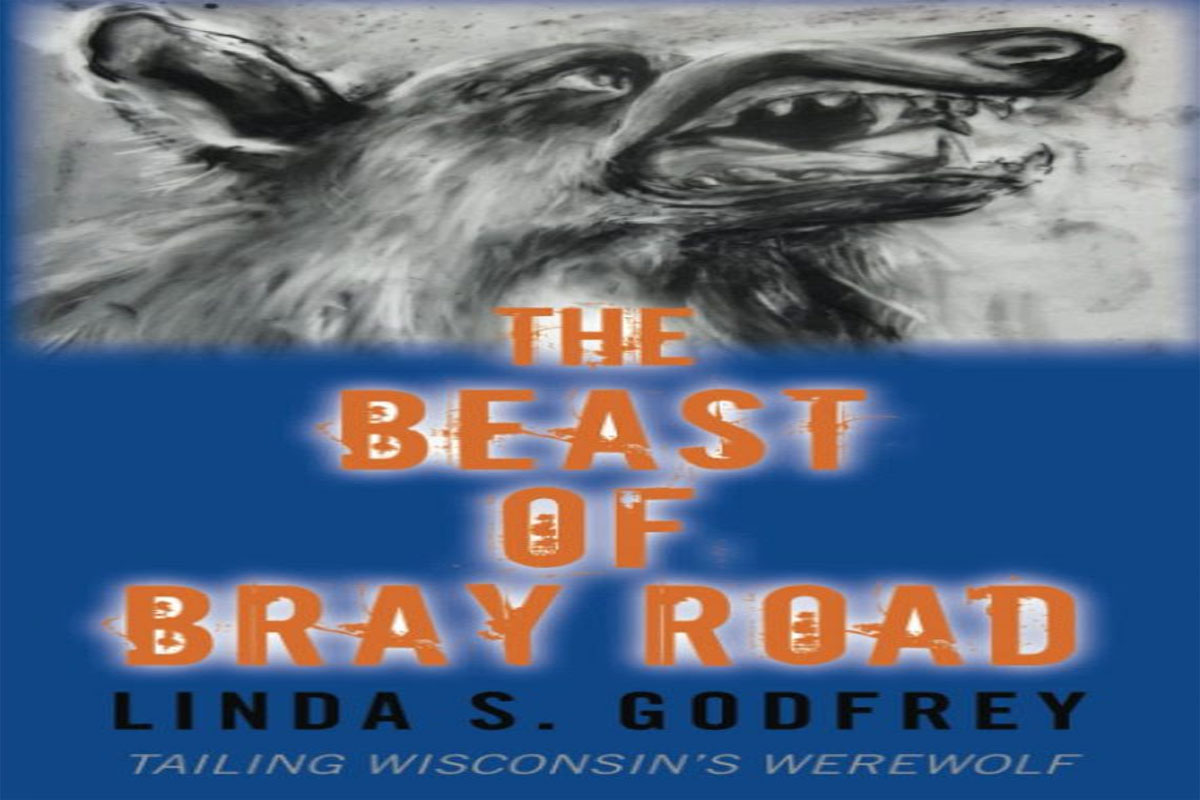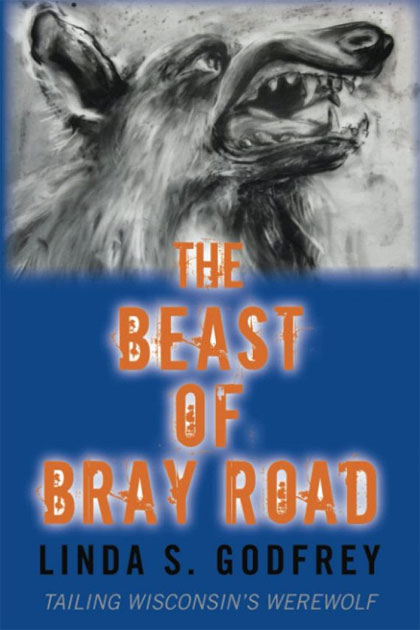
Monsters That Didn’t Surface Until a Few Years Ago
Nick Redfern September 22, 2021
Reports of strange creatures and monsters have been around for decades. Centuries, in fact. For example, the first report of the Loch Ness Monster occurred in the sixth century AD (although, it all actually went down at the River Ness). The Bigfoot creatures were seen way back in the 1800s. That’s when they were known as “wild men.” Sea Serpents have been around for centuries. You get the picture: monsters are nothing new. Well, that’s not exactly true: some monsters have surfaced in relatively recent times. Admittedly, that’s a weird situation, but it’s also true. With that said, let’s have a look at some of these monster cases of the relatively modern type. We’ll begin with the “Beast of Bray Road,” a werewolf-type thing that, despite what some might think, hasn’t been around too long, at all. Linda Godfrey, the undeniable expert in the field of the monsters, says: “Since 1991, the Wisconsin town of Elkhorn has been the lair and hunting ground of a terrifying creature that is the closest thing one can imagine to a real-life werewolf.” And, just maybe, that’s exactly what it is.
 The monster has become known as the Beast of the Bray Road – on account of the fact that many of the initial sightings were made on that particular road. Without doubt, the expert on all-things of a lycanthropic nature in Wisconsin is author and journalist Linda Godfrey, who has penned half a dozen books on werewolves, and who I interviewed about her research into this malignant beast. She told me: “The story first came to my attention in about 1991 from a woman who had heard rumors going around here in Elkhorn, and particularly in the high school, that people had been seeing something like a werewolf, a wolf-like creature, or a wolf-man. They didn’t really know what it was. But some were saying it was a werewolf. And the werewolf tag has just gotten used because I think that people really didn’t know what else to call it.” Why Bray Road wasn’t tagged before 1991 is still unknown.
The monster has become known as the Beast of the Bray Road – on account of the fact that many of the initial sightings were made on that particular road. Without doubt, the expert on all-things of a lycanthropic nature in Wisconsin is author and journalist Linda Godfrey, who has penned half a dozen books on werewolves, and who I interviewed about her research into this malignant beast. She told me: “The story first came to my attention in about 1991 from a woman who had heard rumors going around here in Elkhorn, and particularly in the high school, that people had been seeing something like a werewolf, a wolf-like creature, or a wolf-man. They didn’t really know what it was. But some were saying it was a werewolf. And the werewolf tag has just gotten used because I think that people really didn’t know what else to call it.” Why Bray Road wasn’t tagged before 1991 is still unknown.
Now, onto a monster of the deep that made its debut in recent times. A resident of Lake Windermere, England, Bownessie was 100 percent unheard prior to 2006. In terms of the publicity stakes, however, it has certainly done a great job in catching up. As for Lake Windermere itself, Britannica.com state the following: “The lake is 10.5 miles (17 km) long and 1 mile (1.6 km) wide and has an area of 6 square miles (16 square km). It lies in two basins separated by a group of islands opposite the town of Bowness on the eastern shore and is drained by the River Leven. Part of Lake District National Park, Windermere is a popular tourist center with facilities for yachting and steamers operating in the summer.” As the above data demonstrates, Lake Windermere is much smaller than Loch Ness; yet, that has not stopped a mysterious creature from appearing in its depths, which extend to 219-feet at their deepest.
Now, with that all said, let us take a look at the saga of Bownessie and how and why it has become a monster of the modern era. The first person to have encountered Bownessie was a journalist named Steve Burnip, who saw the creature in 2006. He said of his close encounter of the monstrous type: “I saw a straight line of broken water with three humps. It was about twenty feet long and it went in a straight line up the lake. I nudged my wife and watched open-mouthed as it gradually faded from sight. The water was not choppy, so I know it wasn’t the wind, and I know what the wake from motor boats looks like and it wasn’t that either.” And, thus, a monster was born. Then, there was the so-called “Texas Chupacabra,” that isn’t really a Chupacabra, at all, but that is still an undeniably weird thing.
Ken Gerhard is a good mate and has spent a lot of time pursuing what have become known as the “Texas Chupacabras.” They are hairless canids that look like huge rats, but which are actually coyotes. The lack of hair is not due to down-to-earth mange, however. Rather, it’s clear that these animals are developing in hairless states. There are other anomalies, too: the creatures have strange “pouches” on their back limbs. They have huge overbites. On occasion they will run on their hind legs, in a strange, awkward bouncing fashion. They hunt in the day and do not appear to be intimidated or frightened by the presence of people. This brings us to how and why regular coyotes are quickly turning into something else. Ken has an answer:
 “Many of these Texas chupacabras have been reported in areas in and around coal-burning power-plants. Coal-burning power-plants release massive amounts of toxins, including something called sulfur-dioxide, which – in laboratory tests – has been proven to be a mutagen. This is a toxin that can get into an animal’s blood make-up and actually cause their cells to mutate. Maybe, as a result of the pollution, the immune-systems of these animals have been weakened to the point where, when they do contract the mange mites, their resulting symptoms are much more extreme than anything we’ve encountered before. This may be why they become completely hairless, so fast, and why they look so sickly. It might also explain the physical changes, like the forelimb lengths, the overbites, and the pouches.” And it may also explain why sightings of the Texas Chupacabras didn’t really begin until the early 2000s. It was because, prior to before that, the pollutant wasn’t at a level that was destined to cause problems. Until, that is, the problems did begin. And a “monster” of sorts began to be seen.
“Many of these Texas chupacabras have been reported in areas in and around coal-burning power-plants. Coal-burning power-plants release massive amounts of toxins, including something called sulfur-dioxide, which – in laboratory tests – has been proven to be a mutagen. This is a toxin that can get into an animal’s blood make-up and actually cause their cells to mutate. Maybe, as a result of the pollution, the immune-systems of these animals have been weakened to the point where, when they do contract the mange mites, their resulting symptoms are much more extreme than anything we’ve encountered before. This may be why they become completely hairless, so fast, and why they look so sickly. It might also explain the physical changes, like the forelimb lengths, the overbites, and the pouches.” And it may also explain why sightings of the Texas Chupacabras didn’t really begin until the early 2000s. It was because, prior to before that, the pollutant wasn’t at a level that was destined to cause problems. Until, that is, the problems did begin. And a “monster” of sorts began to be seen.
MU*



















